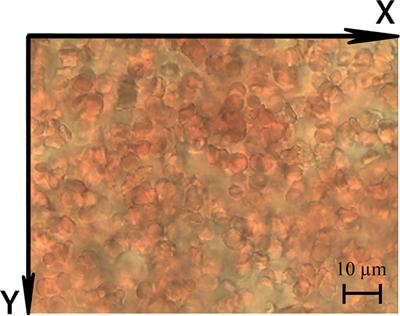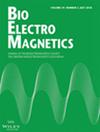下载PDF
{"title":"Analysis of Red Blood Cell Movement in Whole Blood Exposed to DC and ELF Electric Fields","authors":"Miki Kanemaki, Hisae O. Shimizu, Hiroshi Inujima, Takeo Miyake, Koichi Shimizu","doi":"10.1002/bem.22395","DOIUrl":null,"url":null,"abstract":"<p>To evaluate hematological effects of direct current (DC) and alternating current (AC) extremely low frequency (ELF) electric field exposure, this study investigated red blood cell (RBC) movement in whole blood. Video images of RBCs were recorded under a microscope using specially designed electrode systems. Video analysis software was then used to measure the RBC velocity. The noise level and measurement system stability were confirmed based on results of a no-field exposure experiment. Using the electrode system to produce a non-homogeneous electric field, different movements were found to occur in DC and AC field exposure. The RBCs moved in the directions of the electric field and the gradient of field distribution, respectively, in the DC and AC fields. Dependences of the RBC velocity on the field strength were, respectively, linear and quadratic in the DC and AC fields. These results suggest that electrophoretic and dielectrophoretic movements were, respectively, dominant in the DC and AC fields. The magnitude of the electric field necessary to cause these effects was found to be 10<sup>3</sup>–10<sup>5</sup> times greater than the internationally publicized guideline for human safety. © 2022 Bioelectromagnetics Society.</p>","PeriodicalId":8956,"journal":{"name":"Bioelectromagnetics","volume":"43 3","pages":"149-159"},"PeriodicalIF":1.8000,"publicationDate":"2022-03-22","publicationTypes":"Journal Article","fieldsOfStudy":null,"isOpenAccess":false,"openAccessPdf":"https://ftp.ncbi.nlm.nih.gov/pub/pmc/oa_pdf/15/c7/BEM-43-149.PMC9313574.pdf","citationCount":"1","resultStr":null,"platform":"Semanticscholar","paperid":null,"PeriodicalName":"Bioelectromagnetics","FirstCategoryId":"99","ListUrlMain":"https://onlinelibrary.wiley.com/doi/10.1002/bem.22395","RegionNum":3,"RegionCategory":"生物学","ArticlePicture":[],"TitleCN":null,"AbstractTextCN":null,"PMCID":null,"EPubDate":"","PubModel":"","JCR":"Q3","JCRName":"BIOLOGY","Score":null,"Total":0}
引用次数: 1
引用
批量引用
Abstract
To evaluate hematological effects of direct current (DC) and alternating current (AC) extremely low frequency (ELF) electric field exposure, this study investigated red blood cell (RBC) movement in whole blood. Video images of RBCs were recorded under a microscope using specially designed electrode systems. Video analysis software was then used to measure the RBC velocity. The noise level and measurement system stability were confirmed based on results of a no-field exposure experiment. Using the electrode system to produce a non-homogeneous electric field, different movements were found to occur in DC and AC field exposure. The RBCs moved in the directions of the electric field and the gradient of field distribution, respectively, in the DC and AC fields. Dependences of the RBC velocity on the field strength were, respectively, linear and quadratic in the DC and AC fields. These results suggest that electrophoretic and dielectrophoretic movements were, respectively, dominant in the DC and AC fields. The magnitude of the electric field necessary to cause these effects was found to be 103 –105 times greater than the internationally publicized guideline for human safety. © 2022 Bioelectromagnetics Society.
直流和极低频电场下全血红细胞运动分析
为了评估直流(DC)和交流(AC)极低频(ELF)电场暴露对血液学的影响,本研究研究了全血中红细胞(RBC)的运动。使用特殊设计的电极系统在显微镜下记录红细胞的视频图像。然后用视频分析软件测量红细胞流速。通过无场暴露实验,确定了系统的噪声级和稳定性。利用电极系统产生非均匀电场,发现在直流和交流电场暴露下发生不同的运动。红细胞在直流场和交流场中分别沿电场方向和场分布梯度方向运动。在直流和交流电场中,RBC速度与场强分别呈线性关系和二次关系。这些结果表明,在直流和交流电场中,电泳运动和介电泳运动分别占主导地位。产生这些效应所需的电场强度是国际上公布的人体安全准则的103-105倍。©2022生物电磁学学会。
本文章由计算机程序翻译,如有差异,请以英文原文为准。



